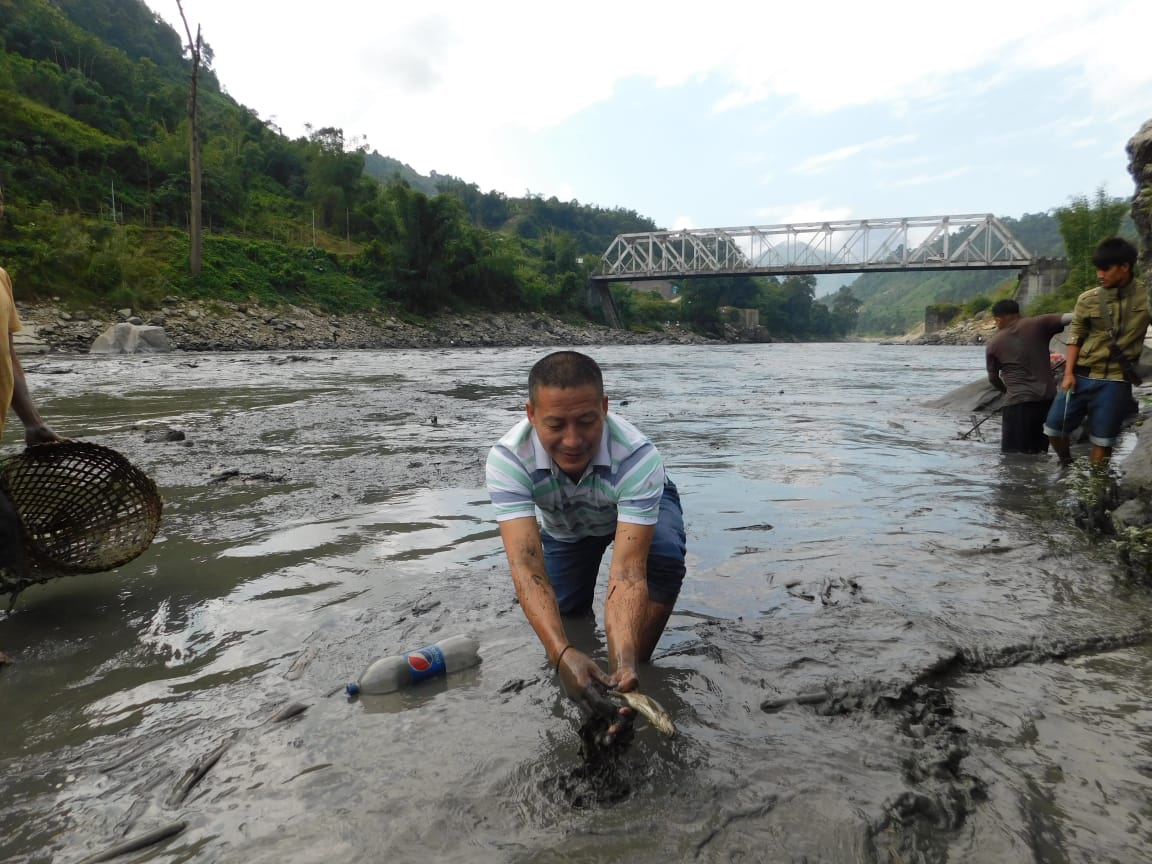River in India mysteriously turns black, killing thousands of fish
Authorities suspect heavy landslide led to colour change but locals initially blamed China
Your support helps us to tell the story
From reproductive rights to climate change to Big Tech, The Independent is on the ground when the story is developing. Whether it's investigating the financials of Elon Musk's pro-Trump PAC or producing our latest documentary, 'The A Word', which shines a light on the American women fighting for reproductive rights, we know how important it is to parse out the facts from the messaging.
At such a critical moment in US history, we need reporters on the ground. Your donation allows us to keep sending journalists to speak to both sides of the story.
The Independent is trusted by Americans across the entire political spectrum. And unlike many other quality news outlets, we choose not to lock Americans out of our reporting and analysis with paywalls. We believe quality journalism should be available to everyone, paid for by those who can afford it.
Your support makes all the difference.Thousands of fish in India have been found dead after a Himalayan river flowing through the north-eastern state of Arunachal Pradesh mysteriously turned black.
The sudden change in colour of the Kameng river triggered panic, prompting local authorities to prohibit residents from venturing into the water.
“As soon as we got the information, we immediately issued an advisory prohibiting the fishing, sale and consumption of any fish sourced from the Kameng river,” Pravimal Abhishek Polumatla, deputy commissioner of East Kameng District, told The Independent.

“We have also issued an advisory asking the public to not venture into the river for any purposes, including swimming, bathing or any recreational purposes,” he added.
The colour change was first noticed in late October. While authorities now suspect heavy landslides led to the phenomenon, locals initially feared it was connected to construction activities by China across the border.
“We did a quick physical examination of river, up to 30km to 40km upstream, and we found that there was a lot of mud deposition and tree deposition along the banks of the river. And turbidity was also quite high,” said Mr Polumatla. “Obviously it was a landslide and an avalanche — but what caused the avalanche, whether it was an earthquake... that is something we are yet to answer.”
Authorities also undertook an aerial survey last week “to get primary data”, but the suspected source of the landslide is near a glacier located below the snow-capped Kyarisatam mountain on the India-Tibet border, was not accessible at the time “due to thick cloud cover and heavy rain”, Mr Polumatla said.
The authorities are working in coordination with independent researchers to ascertain the cause, as well as the impact, of the high turbidity on local biodiversity.
“A preliminary analysis done by our fisheries department on the first day showed that dissolved oxygen levels were quite low,” said Mr Polumatla. “It was as low as 2mg per litre while it should be around 8mg per litre.” This, he said, has put a strain on aquatic life and might have led to the deaths of thousands of fish.
“Because of too much presence of clay and debris coming in the water and high turbidity, many fish died,” he said, while adding that officials are still studying the river and its occupants to find out more.
Professor Punyasloke Bhadury, head of the Centre for Climate and Environmental Studies at IISER Kolkata, has been helping the authorities ascertain the extent of damage to the riverine system. He explained to The Independent how the clouding of the river water limits the penetration of sunlight, in turn affecting the entire ecosystem.

“This impacts the population of microscopic photosynthetic organisms that are responsible for converting dissolved carbon dioxide into complex carbon as well as generating oxygen” and thus sustaining the river’s fish population, Professor Bhadury said.
Local authorities have also sent samples of the fish to laboratories for testing to rule out the possibility of any kind of poisoning. “In hilly [areas], there are certain plants which could have a poisonous affect on aquatic life. That way the poisonous substances can enter the food chain and affect human life [as well],” said Mr Polumatla.
Officials are also keeping an eye out for any cases of food poisoning or diarrhoea in the affected region, but have so far not observed any such pattern.
Chintan Sheth, another independent researcher working with the district authorities, said that aquatic life in the area appeared to be under “severe stress”.
“The entire aquatic life is definitely under severe stress because we have seen the fishes swimming upstream into the tributaries to get oxygen,” said Mr Sheth. “I think it has entirely disturbed the aquatic life. To what extent the damage happened... we still need to assess it,” he said.
Mr Sheth fears that about 30km of the river is affected by the heavy silting. He added that it “would be difficult to put any serious technological intervention in place to get the situation back in order”, with locals instead having to wait it out until the river recovers naturally.

Join our commenting forum
Join thought-provoking conversations, follow other Independent readers and see their replies
Comments